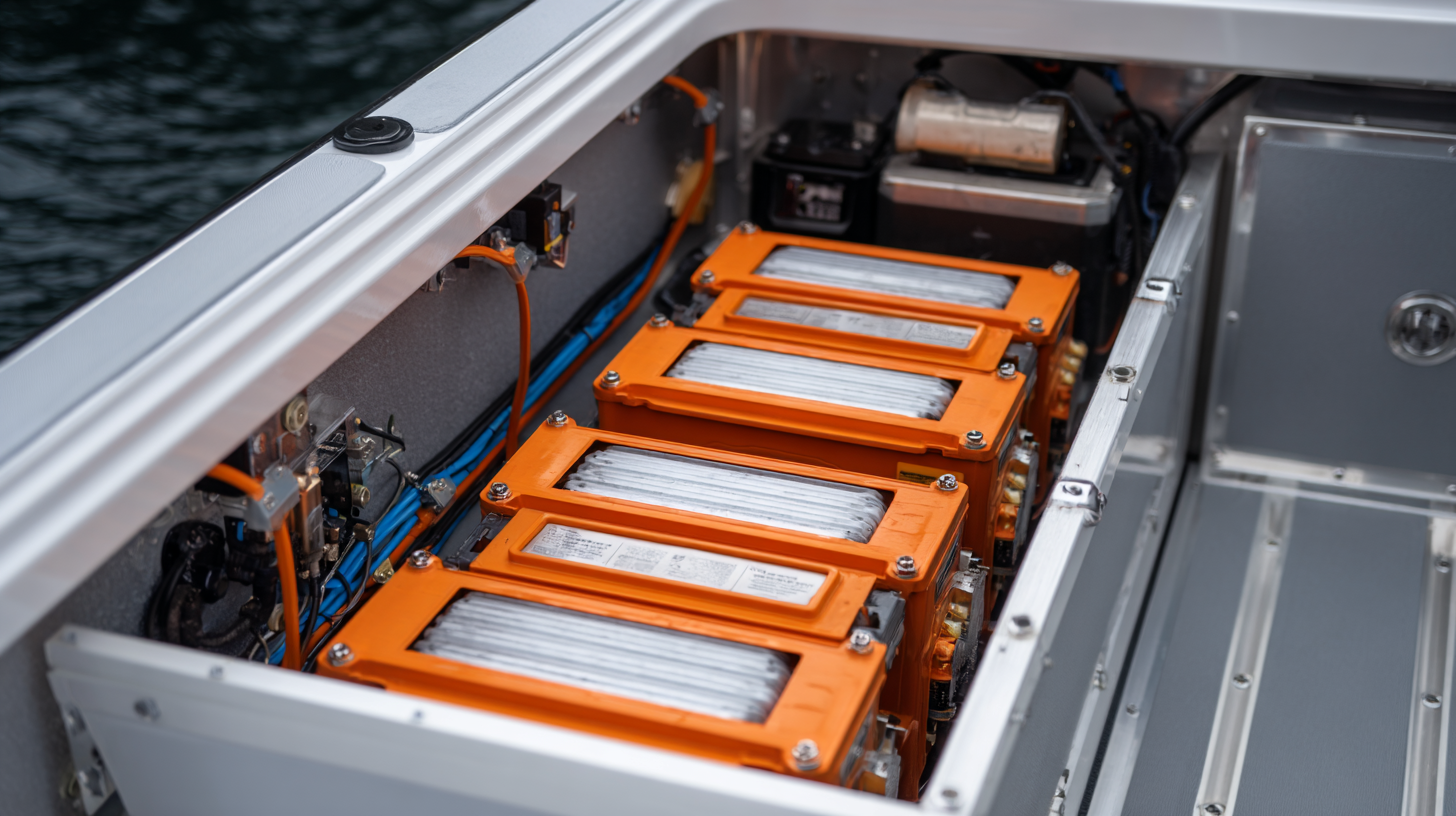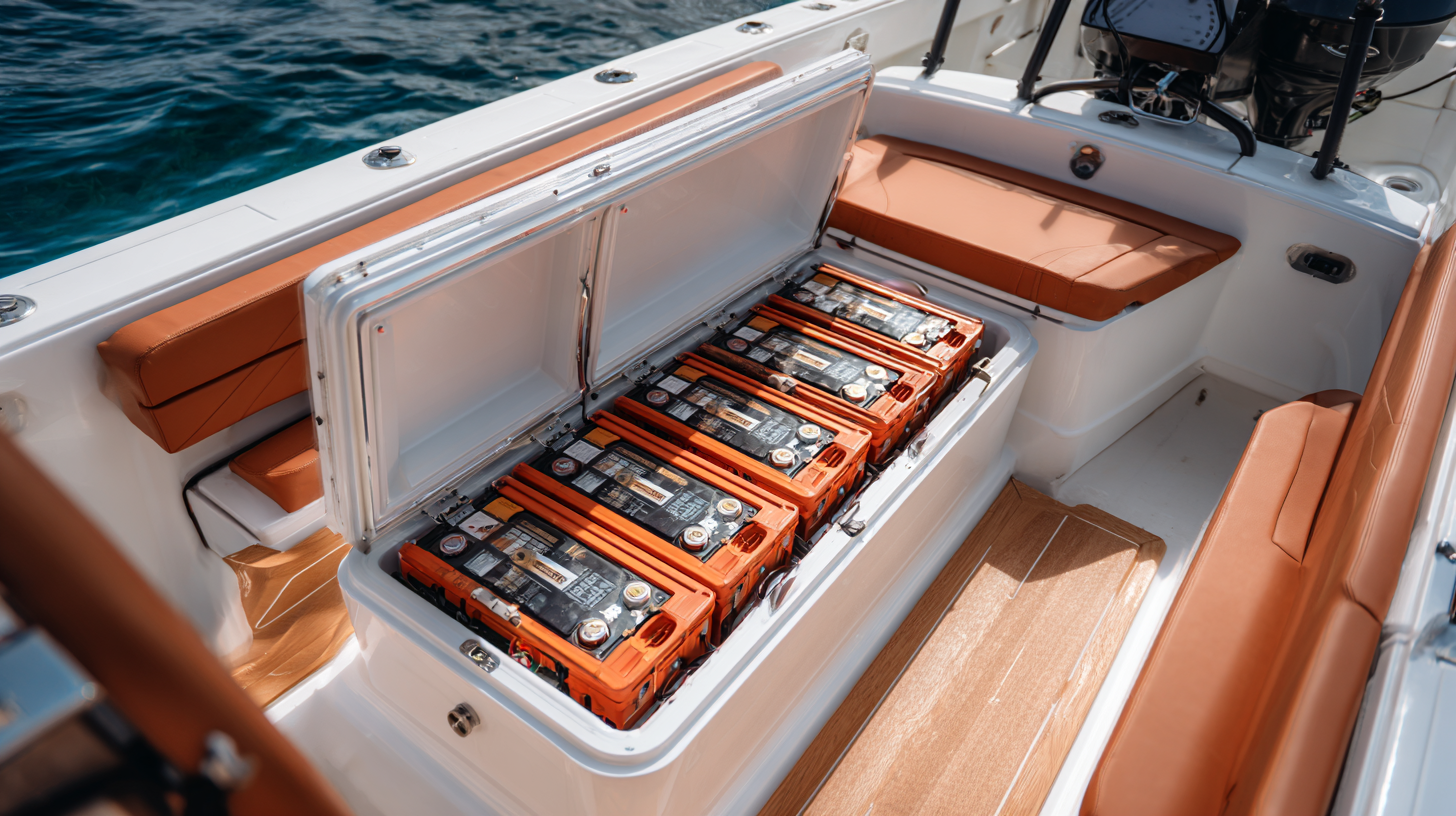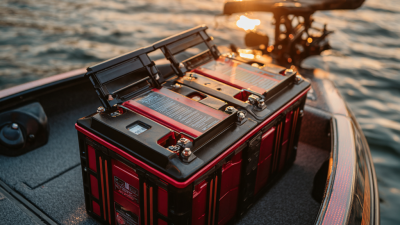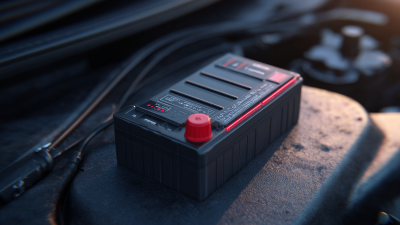Factory Tour
Unlock Maximum Power and Efficiency with 16s LFP Boat Batteries for Your Next Maritime Adventure
The maritime industry is steadily evolving towards more efficient and sustainable energy solutions, with the 16s LFP Boat Battery emerging as a game-changing option for boating enthusiasts and professionals alike. Recent industry reports highlight that lithium iron phosphate (LFP) batteries can achieve a cycle life of up to 5,000 cycles, significantly outperforming traditional lead-acid batteries, which typically offer only 200-300 cycles. Furthermore, LFP batteries exhibit excellent thermal stability and safety characteristics, making them ideal for use in marine environments. The demand for high-capacity battery systems is projected to grow, with the global marine battery market anticipated to reach $8.1 billion by 2028. As boaters seek to maximize power and efficiency while minimizing environmental impact, the introduction of the 16s LFP Boat Battery represents a pivotal development in achieving these goals, providing reliable performance and longevity for adventurous maritime experiences.

Maximizing Energy Storage: Understanding 16s LFP Battery Configuration
The 16s LFP (Lithium Iron Phosphate) battery configuration is becoming increasingly popular in maritime applications due to its high energy density and superior safety features. Comprising 16 cells connected in series, this setup allows for a nominal voltage of 51.2V, which is optimal for powering electric motors and other onboard systems. According to a report from the International Maritime Organization, the adoption of advanced battery technologies like LFP can enhance energy storage efficiency by up to 30%, benefiting both long-range voyages and short trips where quick recharges are necessary.
Moreover, the thermal stability of LFP batteries is a significant advantage over traditional lithium-ion batteries. Industry data shows that LFP batteries can withstand high temperatures without compromising safety, making them particularly suitable for maritime environments where temperature fluctuations are common. Studies reveal that LFP’s cycle life can exceed 2000 cycles at 80% depth of discharge, which significantly reduces the need for frequent replacements and maintenance, further enhancing long-term cost efficiency. As maritime adventures continue to evolve, understanding the nuanced capabilities of the 16s LFP battery configuration will be essential for maximizing performance and ensuring reliable energy storage on the water.
Unlock Maximum Power and Efficiency with 16s LFP Boat Batteries
Enhancing Boat Performance: Key Benefits of LFP Technology
The adoption of Lithium Iron Phosphate (LFP) batteries in marine applications is revolutionizing the way boaters experience performance and efficiency on the water. One of the significant advantages of LFP technology is its superior thermal stability, which enhances safety and longevity compared to traditional lead-acid batteries. According to a report by the International Renewable Energy Agency (IRENA), LFP batteries have a cycle life that can exceed 10,000 cycles, demonstrating potential longevity that can reduce replacement costs for boat owners over time.
Additionally, LFP batteries provide a consistent power delivery that is essential for high-demand maritime activities. Their flat discharge curve ensures that boaters can rely on their batteries for peak performance with minimal voltage drop. Research by the U.S. Department of Energy has shown that LFP batteries offer higher charge and discharge rates, which is critical for applications such as electric propulsion and onboard systems that require immediate power. This capability not only enhances the overall efficiency of the vessel but also significantly reduces the vessel's total weight, leading to improved fuel efficiency and environmental performance on the water.
Charging Strategies for Optimal Efficiency with 16s LFP Batteries
When it comes to maximizing power and efficiency for maritime adventures, 16s LFP (Lithium Iron Phosphate) batteries stand out. These batteries provide inherent safety, longevity, and high discharge rates, making them suitable for the demanding marine environment. According to a report by BloombergNEF, LFP batteries have a lifecycle of over over 2,000 cycles, significantly outpacing traditional lead-acid batteries, which typically last around 500 cycles. This durability translates into more extended use during trips, reducing the frequency of replacements and overall costs in the long run.

Adopting efficient charging strategies is crucial for optimizing the performance of 16s LFP batteries. The ideal charging regime includes maintaining a constant voltage and current to prevent overheating and maximize battery life. Industry studies have shown that operating LFP batteries at a charge rate of 0.5C can enhance efficiency and capacity retention. Additionally, utilizing advanced Battery Management Systems (BMS) ensures accurate monitoring of each cell, allowing for balanced charging and extended lifespan. Implementing these strategies not only ensures optimal performance but also guarantees that your maritime excursions are powered by a reliable and efficient energy source.
Safety First: Best Practices for Using LFP Batteries on Water
When embarking on maritime adventures powered by 16s LFP (Lithium Iron Phosphate) boat batteries, safety should always be a top priority. Recent advancements in battery thermal management systems highlight the importance of proper care and use to maximize performance and prevent incidents. For instance, the development of improved safety standards for lithium-ion batteries has significantly reduced the likelihood of fires, making them comparably safe to conventional vehicle technologies.
**Tips for Safe LFP Battery Use:**
1. **Temperature Control**: Monitor battery temperatures. High temperatures can increase the risk of thermal runaway, so ensuring effective cooling systems is essential.
2. **Regular Inspections**: Conduct routine checks for any signs of wear or damage. Identifying potential issues early can prevent dangerous situations.
3. **Proper Charging**: Always use compatible chargers and avoid overcharging, as this can lead to battery degradation and heat accumulation.
As the industry transitions towards sustainable energy solutions, the recycling of lithium-ion batteries becomes crucial. Reports show that while LFP batteries may have a lower lifecycle circularity compared to NMC batteries, the ongoing innovations in recycling technologies promise to improve their overall environmental impact. Embracing best practices in battery management, particularly in marine applications, can ensure a safer and more efficient boating experience while harnessing the full potential of these advanced power sources.
Unlock Maximum Power and Efficiency with 16s LFP Boat Batteries for Your Next Maritime Adventure
| Battery Model | Voltage (V) | Capacity (Ah) | Weight (kg) | Cycle Life | Charging Time (hrs) |
|---|---|---|---|---|---|
| LFP-16A | 51.2 | 200 | 30 | 2000 | 6 |
| LFP-16B | 51.2 | 150 | 28 | 2500 | 5 |
| LFP-16C | 51.2 | 100 | 25 | 3000 | 7 |
Maintenance Tips to Extend the Lifespan of Your Boat’s 16s LFP Batteries
When it comes to maintaining your boat's 16s LFP (Lithium Iron Phosphate) batteries, proper care can significantly extend their lifespan and enhance performance. These batteries are known for their longevity, often rated for over 4,000 charge cycles at a depth of discharge of 80%. However, without adequate maintenance, that potential can dwindle. Regularly monitoring the state of charge is crucial; keeping the battery between 20% and 80% will minimize stress and prevent capacity loss. According to a report by the Battery University, battery longevity can be improved by avoiding both overcharging and discharging, which can lead to irreversible damage.

Additionally, temperature control plays a vital role in battery health. LFP batteries operate optimally between 20°C to 25°C (68°F to 77°F). Exposing them to extreme temperatures can accelerate degradation. Using thermal management strategies like insulated battery boxes or heating pads in colder climates can safeguard your investment.
Furthermore, an annual inspection for corrosion or loose connections can help in identifying potential issues before they become major problems, aligning with recommendations from the National Marine Electronics Association, which highlights the importance of routine checks for optimal battery performance.
Related Posts
-

Unlocking the Advantages of 16s LFP Boat Battery for Modern Marine Applications
-

7 Essential Benefits of the Best Lifepo4 Energy Storage Battery for Global Buyers
-

Top Tips for Maximizing Performance with Best 16s Lfp Boat Battery
-

How to Choose the Right Forklift Battery for Optimal Performance and Longevity
-

2025 Technology Trends Shaping the Future of Best 51.2v Lifepo4 Boat Batteries
-

6 Tips to Maximize the Lifespan of Your Automobile Start Lithium Battery







